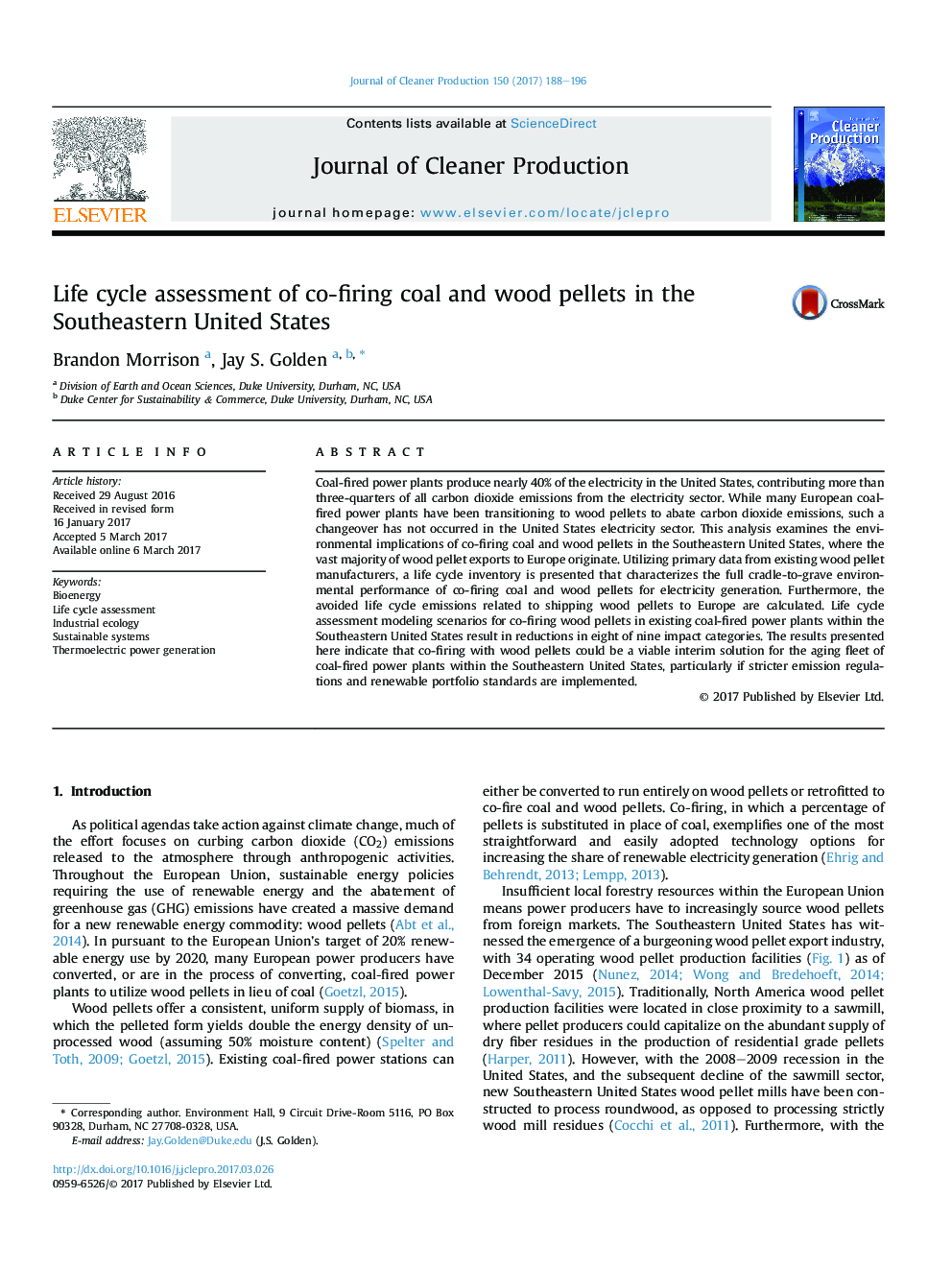| Article ID | Journal | Published Year | Pages | File Type |
|---|---|---|---|---|
| 5480581 | Journal of Cleaner Production | 2017 | 9 Pages |
â¢Comparative LCA of co-firing wood pellets with coal in Southeastern United States.â¢Primary data from existing wood pellet facilities is utilized to enhance assessment.â¢Co-firing reduces environmental impacts in eight midpoint categories.â¢Wood pellets are a viable interim solution for aging fleet of coal power plants.
Coal-fired power plants produce nearly 40% of the electricity in the United States, contributing more than three-quarters of all carbon dioxide emissions from the electricity sector. While many European coal-fired power plants have been transitioning to wood pellets to abate carbon dioxide emissions, such a changeover has not occurred in the United States electricity sector. This analysis examines the environmental implications of co-firing coal and wood pellets in the Southeastern United States, where the vast majority of wood pellet exports to Europe originate. Utilizing primary data from existing wood pellet manufacturers, a life cycle inventory is presented that characterizes the full cradle-to-grave environmental performance of co-firing coal and wood pellets for electricity generation. Furthermore, the avoided life cycle emissions related to shipping wood pellets to Europe are calculated. Life cycle assessment modeling scenarios for co-firing wood pellets in existing coal-fired power plants within the Southeastern United States result in reductions in eight of nine impact categories. The results presented here indicate that co-firing with wood pellets could be a viable interim solution for the aging fleet of coal-fired power plants within the Southeastern United States, particularly if stricter emission regulations and renewable portfolio standards are implemented.
